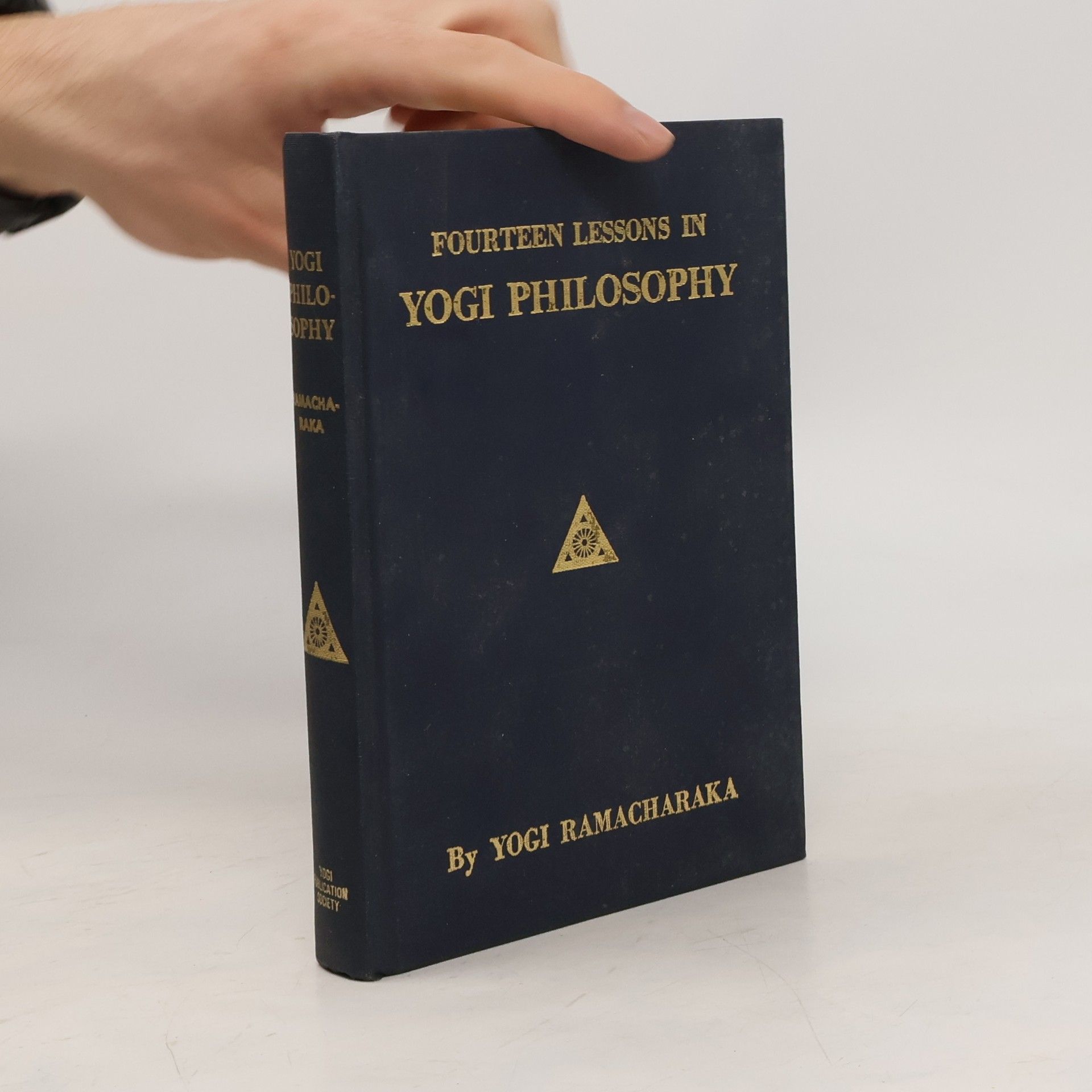Fourteen Lessons in Yogi Philosophy and Oriental Occultism
- 286 pages
- 11 hours of reading
Fourteen Lessons in Yogi Philosophy and Oriental Occultism
This series offers a profound exploration into the diverse paths of yoga, encompassing the physical control of the body, the development of the mind, and spiritual insight. Each installment provides comprehensive lessons dedicated to a specific discipline, whether it be Hatha Yoga for the body, Raja Yoga for the mind, Bhakti Yoga for the heart, or Gnani Yoga for the intellect. It serves as a guide to self-discovery, inner balance, and understanding the universal principles of existence. The collection appeals to those seeking a deeper comprehension of themselves and the world through ancient wisdom.






Fourteen Lessons in Yogi Philosophy and Oriental Occultism
This renowned book offers a clear presentation of Raja Yoga principles tailored for Western readers. Written by William Walker Atkinson in 1906, it features philosophical insights and mental exercises aimed at enhancing personal control, enjoyment, and the development of occult powers, guiding the soul toward spiritual illumination.
1904. What is Hatha Yoga? Yogis' regard for the physical body; Work of the divine Architect; Our friend, the vital force; Laboratory of the body; life fluid; Crematory of the system; Nourishment; Hunger vs. appetite; Prana absorption from food; About food; Irrigation of the body; Ashes of the system; Yogi breathing; Effect of correct breathing; Breathing exercises; Nostril breathing vs. mouth breathing; Little lives of the body; Control of the involuntary system; Pranic energy; Science of relaxation; Use of physical exercise; Yogi bath; Solar energy; Fresh air; Nature's sweet restorer, sleep; Regeneration; Mental attitude; Led by Spirit. This book has practical and excellent suggestions for promoting health in the body.
The Yogi Philosophy may be divided into several great branches, or fields. What is known as "Raja Yoga" deals with the Mind; its control; its development; its unfoldment, etc.
Followers of the early-20th-century "New Age" philosophy of New Thought believed they could learn the secrets of mind over matter, and one of their most influential teachers-enormously popular writer and editor William Walker Atkinson, writing pseudonymously here-revealed to them, in this 1904 work, the teachings of Hatha Yoga. His lessons cover: . the body's Vital Force. the laboratory of the body. how what we eat impacts the "life fluid" of the blood. the yogi's approach to food and eating. the yogi theory of the "prana absorption" of nutrients. mastering "yogi breathing." harnessing "pranic energy." rules for relaxation. and much more.ALSO AVAILABLE FROM COSIMO: Yogi Ramacharaka's Series of Lessons in Gnani Yoga and Series of Lessons in Raja Yoga.American writer WILLIAM WALKER ATKINSON (1862-1932) was editor of the popular magazine New Thought from 1901 to 1905, and editor of the journal Advanced Thought from 1916 to 1919. He authored dozens of New Thought books under numerous pseudonyms, some of which are likely still unknown today, including "Yogi Ramacharaka" and "Theron Q. Dumont."
Focusing on the principles of Hatha Yoga, the book emphasizes a return to nature and the innate instincts that promote health. It encourages practitioners to "let go" and align their lives with natural conditions amidst modern artificiality. Rather than introducing a new doctrine, it invites readers to rediscover traditional methods and ways of living that have been overlooked. The text serves as a guide to reconnect with nature's wisdom for improved well-being.
Exploring the teachings of Gnani Yoga, this 1906 work by William Walker Atkinson delves into the philosophy of New Thought, emphasizing the power of mind over matter. Atkinson, a prominent figure in the New Age movement, shares insights on achieving wisdom and personal transformation through mental discipline. His lessons aim to guide readers in harnessing their mental potential, fostering a deeper understanding of self and the universe. The book serves as a practical manual for those seeking enlightenment and mastery over their thoughts.
Originally presented as monthly lessons from October 1904 to September 1905, this volume serves as a sequel to a prior series on Yogi Philosophy and Oriental Occultism. It comprises twelve lessons that delve deeper into the teachings and practices of yoga and Eastern mysticism, building on the foundational concepts introduced in the earlier work. This structured approach aims to enhance the reader's understanding and application of yogic principles.